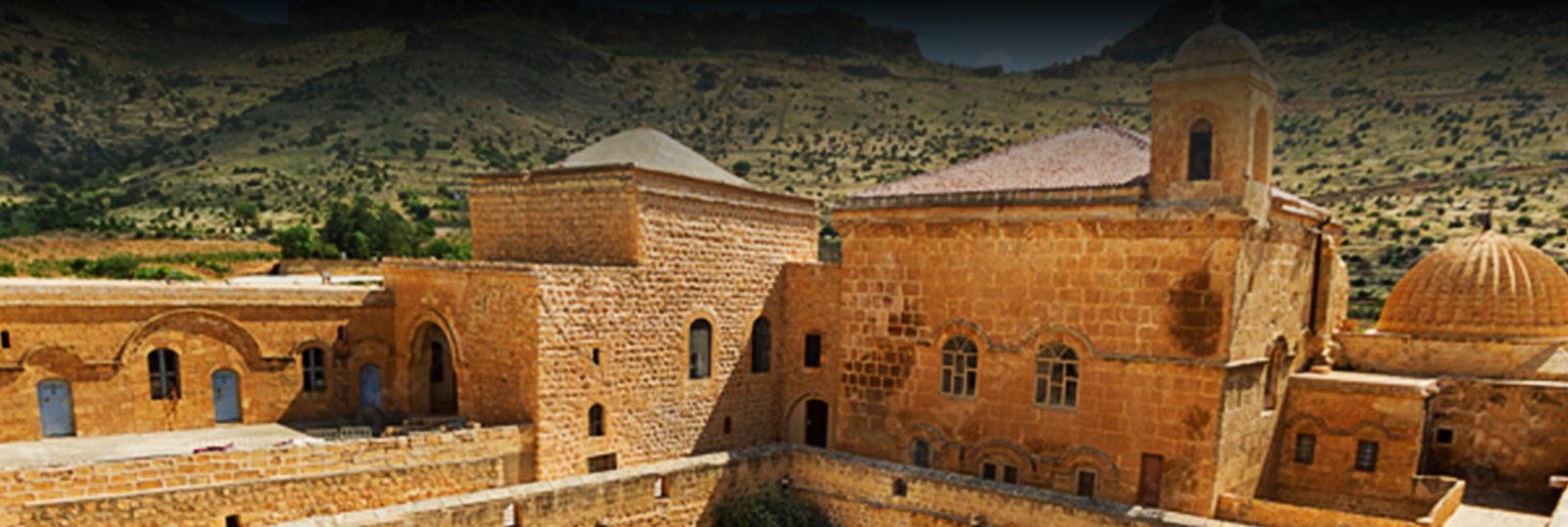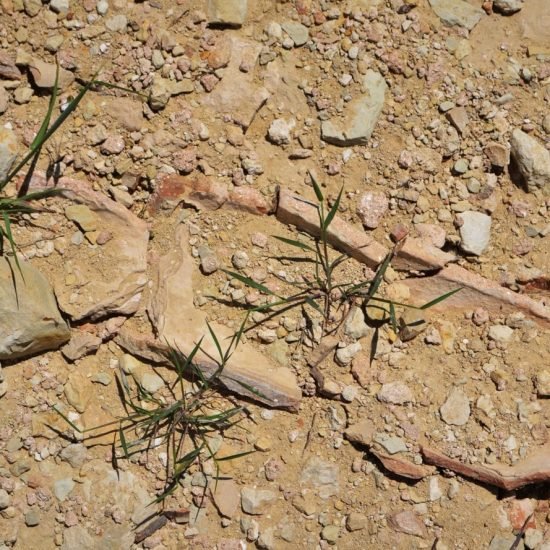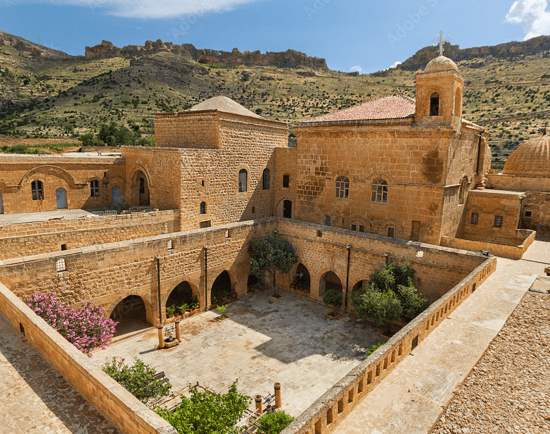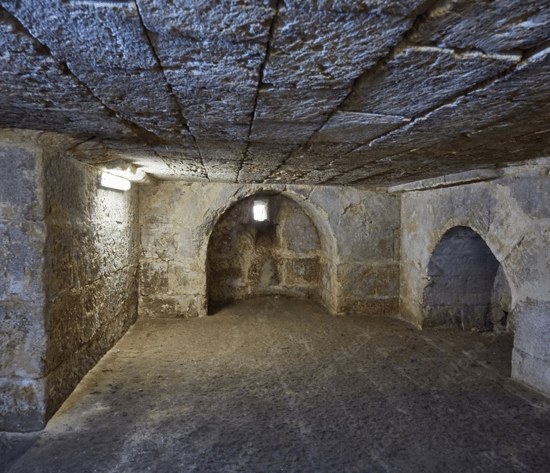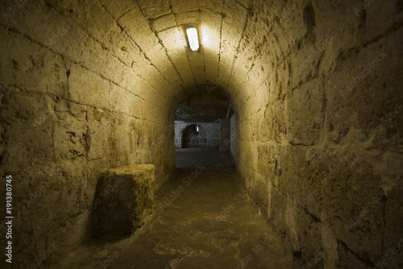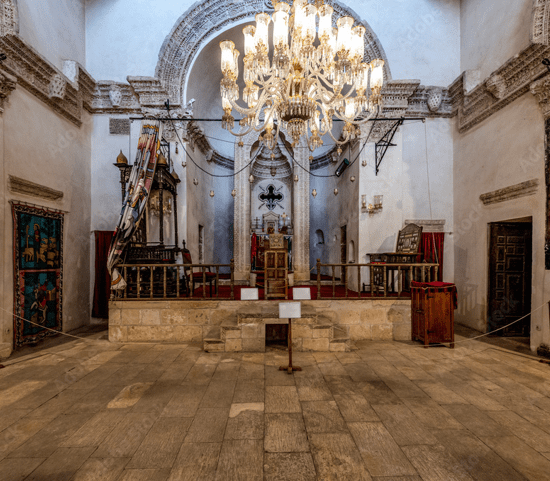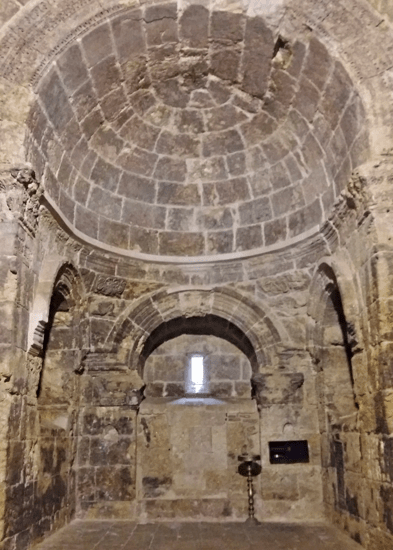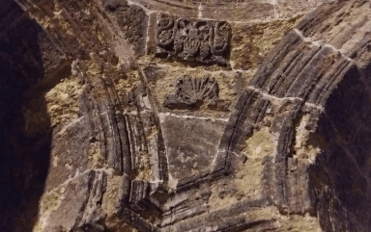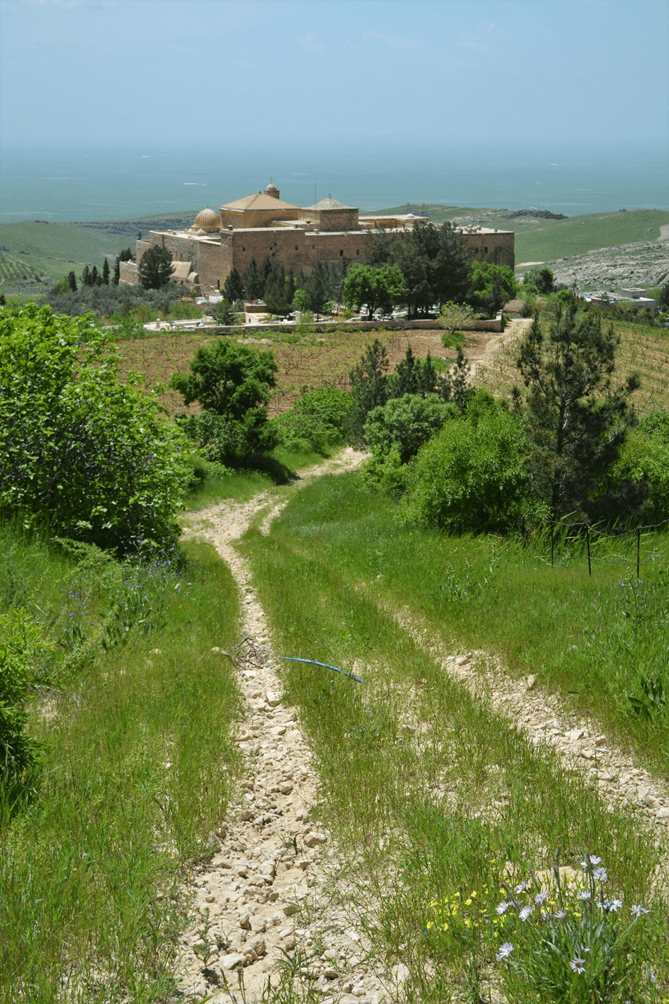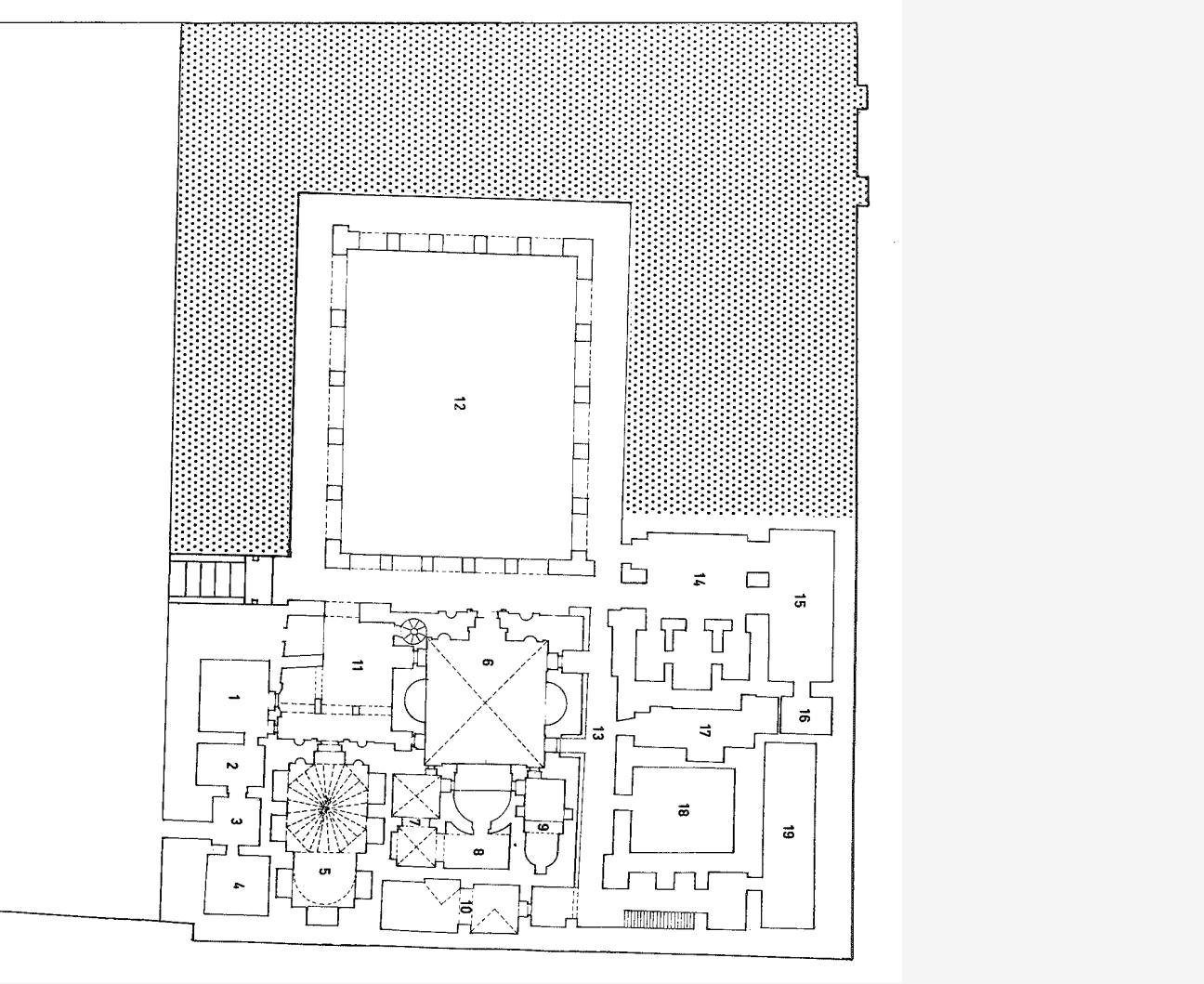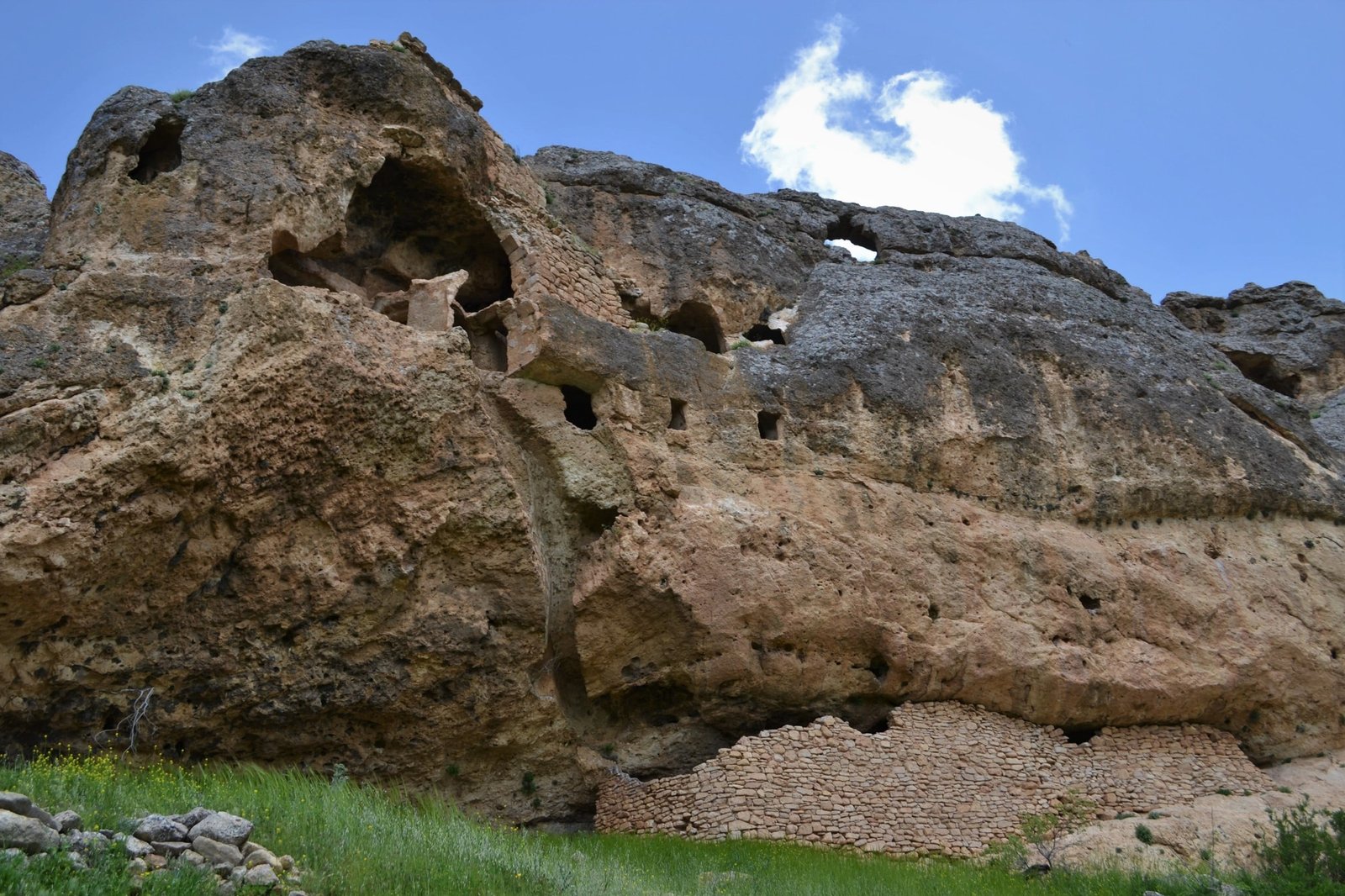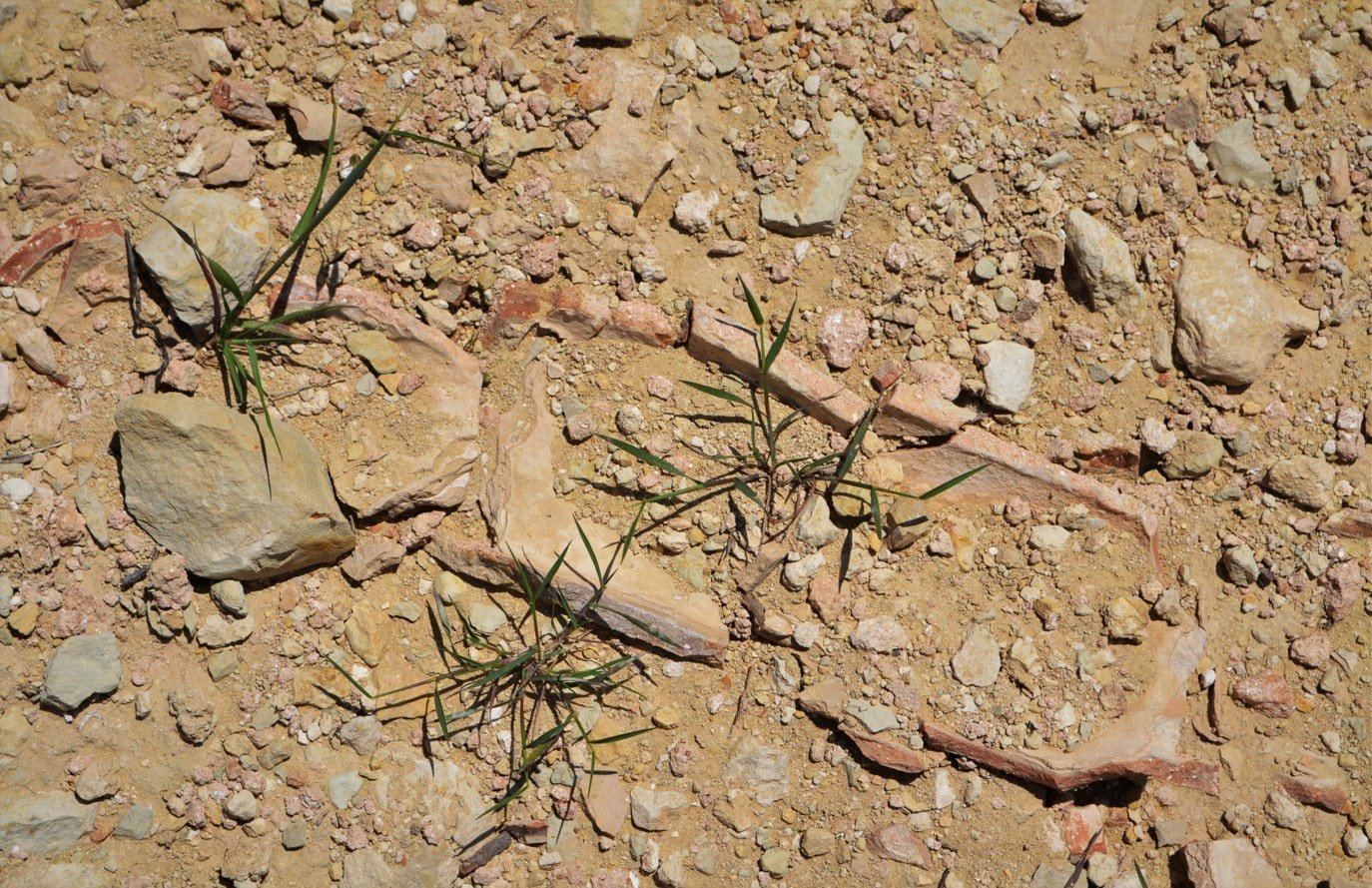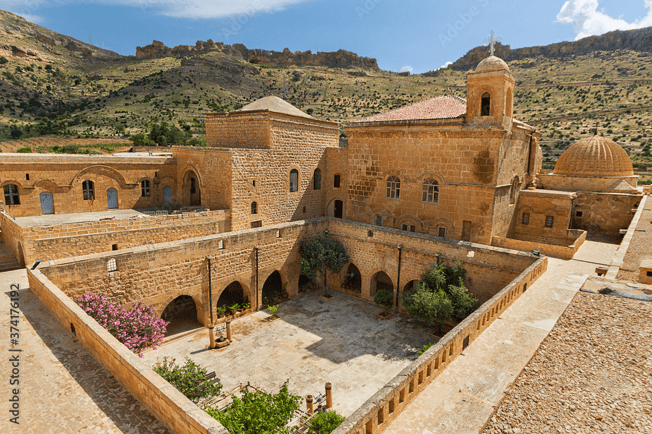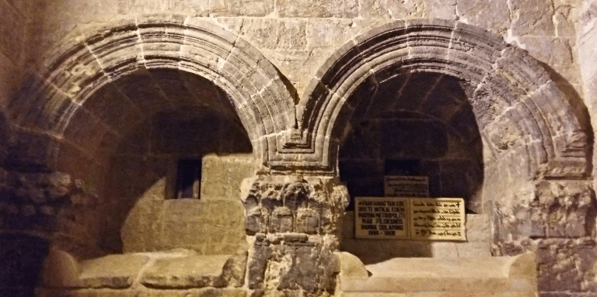The Monastery of Mor Hananyo
per person
The monastic complex of Mor Ḥananyo is located 5 kilometers East of the Turkish city of Mardin, capital of the homonymous province. It lies in a shallow basin half-way up the side of the mountain ridge.
It’s ancient name of “Monastery of St Ananias” was due to a bishop of Mardin, who rebuilt the monastery in 793 CE after a period of decline. Nevertheless, the complex was founded in the early sixth century, and its most ancient buildings are the main church, the Church of the Mother of God, and the beth qadishe (burial chamber). The monastery is said to have been erected on a complex that was used as Temple of the Sun, and as a castle by the Romans after the second century. When the Romans abandoned the fortress in the late fifth century, Saint Şleymun brought the bones of some saints here and turned the castle into a monastery, which was, indeed, formerly known as Mor Şleymun Monastery (Hollerweger, Hans, Andrew Palmer, Sebastian Brock, and Sevil Gülçur. Lebendiges Kulturerbe : Turabdin : Wo Die Sprache Jesu Gesprochen Wird. Freunde des Tur Abdin, 1999, 340; http://www.deyrulzafaran.org/turkce/detay.asp?id=15&kategori=MANASTIR). However, no archaeological investigation has been carried out to verify the presence of a temple or a Roman military outpost, for the only source we rely upon is the testimony of the early nineteenth-century traveler Gertrude Bell (Bell, Gertrude, and Marlia Mundell Mango. The Churches and Monasteries of the Tur’Abdin. London: The Pindar Press, 1982: 69f, 132-5, Pls. 188-198). Between 1166 and 1932, with some interruptions, Mor Ḥananyo was the residence of Syrian Orthodox Patriarchs. The throne of the patriarch and his library, with valuable manuscripts and books, are still preserved in the monastery (Hollerweger et al, 1999, 342). After the 15th century, the complex began to be called Deyrulzafaran (Saffron Monastery), perhaps after the saffron plant growing around it or else because of the warm color of its stone.
Life in the Saffron Monastery today is varied and interesting, and the celebration of the Liturgy stands at the hearth of its daily routine. It is one of the important religious centers of the Syriac Church, as well as the residence of the Metropolitan of Mardin. Assyrians scattered all over the world, together with local and foreign tourists visit the monastery everyday.
FORMAL ANALYSIS
The monastic buildings are grouped around a courtyard with a cloister. Running water from the hills bring life into this quite place (earthenware pipelines are still visible along the path leading to the remains of a structure over one of the hills). Next to the church to the north is the “Upper Room” where the newly elected patriarch was inducted. The patriarch consecrated this room, which is dedicated to St Paul and St Peter (Hollerweger et al, 1999, 347).
Under the ribbed dome to the south of the church is the beth qadishe, with the tombs of the saints and patriarchs, buried here in full regalia, seated on thrones (Hollerweger et al, 1999, 350).
The capitals and ornaments, the decorative friezes and the conches, bear witness to the skill of craftsmen from the time of the Emperor Anastasius, who built the remarkable city of Dara Anastasiopolis (503-505 CE) just off the road from Mardin to Nusaybin. The façade of the monastery facing the plain is from the nineteenth century (Hollerweger et al, 1999, 340-341).
Mardin is, indeed, just outside of the historical region of Ṭūr ‘Abdīn, however there is a formal resemblance between Mor Ḥananyo church and the famous church of the Mother of God at Hah in the Ṭūr ‘Abdīn. Both buildings have a square plan with arches at the four points of the compass, those on the north, east and south being closed by conches, two for the antiphonal monastic choir and one for the altar. A rich frieze incorporating harvest baskets as well as the usual vines runs around the inside of Mor Ḥananyo church and over the arches (Hollerweger et al, 1999, 348).
- THE MONASTERY OF MOR HANANYO © PHOT. VIRGINIA SOMMELLA, 2019
- THE MONASTERY OF MOR HANANYO © Monastic complex’: general plan by A.M. Batti, in Iacobini 1986, 130
- THE MONASTERY OF MOR HANNAYO AND ITS SORROUNDING LANDSCAPE © PHOT. VIRGINIA SOMMELLA, 2019
- REMAINS OF A STRUCTURE, HALF ROCK-CUT AND HALF MASONRY-BUILT, ON THE TOP OF THE NORTHEN HILL OVERLOOKING THE MONASTERY © PHOT. VIRGINIA SOMMELLA, 2019
- REMAINS OF EARTHENWARE PIPELINES VISIBLE ALONG THE PATH CONNECTING THE MONASTERY AND THE STRUCTURE OVERLOOKING IT ADOBE STOCK © PHOT. VIRGINIA SOMMELLA, 2019
- THE MONASTERY OF MOR HANANYO © ADOBE STOCK PHOT. https://stock.adobe.com/it/search?k=deyrulzafaran&asset_id=374176192
- EXTERNAL MAIN ENTRANCE ADOBE STOCK PHOT. https://stock.adobe.com/it/search?k=deyrulzafaran&asset_id=374176192
- ARCADES AROUND THE COURTYARD © ADOBE STOCK PHOT. https://stock.adobe.com/it/search?k=deyrulzafaran&asset_id=374176192
- NINETEENTH CENTURY FAÇADE © ADOBE STOCK, PHOT. https://stock.adobe.com/it/search?k=deyrulzafaran&asset_id=374176192
- ACCES CORRIDOR TO YHE SEMI-UNDERGROUND ROOM, WITH BARREL VAULT © ADOBE STOCK PHOT. https://stock.adobe.com/it/search?k=deyrulzafaran&asset_id=374176192
- SEMI-UNDERGROUND ROOM, COMMONLY KNOW AS “TEMPLE OF THE SUN”. BUILT DURING THE CONSTRUCTION OF THE MONASTERY, TOGETHER WITH THE BURIAL CHAMBER ABOVE, AS A SORT OF CRYPT © ADOBE STOCK PHOT. (https://stock.adobe.com/it/search?k=deyrulzafaran&asset_id=374176192
- MAIN CHURCH, APSE AND TOP OF THE NAOS WITH CARVED FRAME (Antonio Iacobini, 1986: 144-147) © ADOBE STOCK PHOT. https://stock.adobe.com/it/search?k=deyrulzafaran&asset_id=374176192
- MAIN CHURCH, APSE AND TOP OF THE NAOS WITH CARVED FRAME (Antonio Iacobini, 1986: 144-147) © ADOBE STOCK PHOT. https://stock.adobe.com/it/search?k=deyrulzafaran&asset_id=374176192
- THE BURIAL CHAMBER OR “HOUSE OF SAINT” (BETH QADISHE), WHERE ARE THE TOMBS OF SYRIAC ORTHODOX PATRIARCHS AND METROPOLITAN BISHOPS. THEIR REMAINS ARE STORED IN SEVEN NICHES, THE ARCHE OF WHICH ARE UNDERLINED BY A TIHICK CARVED FRAME © PHOT. https://grandeflanerie.com/portfolio/syriacmardin/
- THE BURIAL CHAMBER OR “HOUSE OF SAINT” (BETH QADISHE), WHERE ARE THE TOMBS OF SYRIAC ORTHODOX PATRIARCHS AND METROPOLITAN BISHOPS. THEIR REMAINS ARE STORED IN SEVEN NICHES, THE ARCHE OF WHICH ARE UNDERLINED BY A TIHICK CARVED FRAME © PHOT. https://grandeflanerie.com/portfolio/syriacmardin/
- THE BURIAL CHAMBER OR “HOUSE OF SAINT” (BETH QADISHE), WHERE ARE THE TOMBS OF SYRIAC ORTHODOX PATRIARCHS AND METROPOLITAN BISHOPS. THEIR REMAINS ARE STORED IN SEVEN NICHES, THE ARCHE OF WHICH ARE UNDERLINED BY A TIHICK CARVED FRAME © PHOT. https://grandeflanerie.com/portfolio/syriacmardin/
Información de la localidad
The Monastery of Mor Hananyo
| Other monuments and places to visit | (1) The Fountain House to the southwest of the monastery. (2) The structures, half rock-cut and half masonry-built, on the top of the hill north of the monastery. (3) The Mardin Museum in the city. (4) The church of the Forty Martyrs of Sebasteia in Mardin. (5) The Church of Mor Shmuni, in the south-western part of Mardin. |
| Natural Heritage | A slight slope overlooking the plain of Mardin, surrounded by hills, vines, almond-trees and orchards, irrigated throughout the year by springs of sparkling water (Palmer, 2010: 13). |
| Historical Recreations | |
| Festivals of Tourist Interest | |
| Fairs | |
| Tourist Office | Yes |
| Specialized Guides | Yes |
| Guided visits | Yes |
| Accommodations | No hostel in the monastery. Hotel or bed and breakfast are available in the city of Mardin and its surroundings, 4km away. |
| Restaurants | In the monastery’s visitor center there is a coffee shop where is possible to buy drinks and snack. To find a proper restaurant one has to reach the city of Mardin, 4km away. |
| Craft | |
| Bibliography | T. A. Sinclair, Eastern Turkey: An Architectural and Archaeological Survey., 4 vols (Pindar Press, 1987). Andrew Palmer, Monk and Mason on the Tigris Frontier: The Early History of Tur `Abdin (Cambridge England ; New York: Cambridge University Press, 1990). Hans Hollerweger et al., Lebendiges Kulturerbe : Turabdin : Wo Die Sprache Jesu Gesprochen Wird (Freunde des Tur Abdin, 1999). Elif Keser Kayaalp, Church Architecture of Late Antique Northern Mesopotamia, Oxford Studies in Byzantium (Oxford, New York: Oxford University Press, 2021). Keser Kayaalp, Elif, ed. Syriac Architectural Heritage at Risk in TurʿAbdin. Istanbul: KMKD, 2022. |
| Videos | |
| Website |
| Monument or place to visit | Monastery of Mor Ḥananyo. |
| Style | Early sixth-century Eastern Byzantine architecture, eight-century later addictions, nineteenth-century structural and decorative interventions. |
| Type | Monastic complex. |
| Epoch | 6th century – present. |
| State of conservation | Good conditions. |
| Degree of legal protection | Included in the World Heritage Tentative List by UNESCO in 2021. |
| Mailing address | Eskikale, Deyrulzafaran Yolu No:1 D:2, 47100 Artuklu/Mardin, TR. |
| Coordinates GPS | 37°17'57.77N 40°47'33.16E |
| Property, dependency | |
| Possibility of visits by the general public or only specialists | Accessible to general public, with few inaccesible private areas. |
| Conservation needs | |
| Visiting hours and conditions | During the «Summer Semester» the monastery is open to visitors from 8:30am to 12:00pm and from 1:00pm to 5:00pm; during the «Winter Period» the afternoon hours will change to 1:00 – 4:30pm Visiting conditions are: speaking quietly, not smoking, wearing appropriate clothes and not eating during the visit. |
| Ticket amount | 15 TL. |
| Research work in progress | The Ancient Assyrian Deyrulzafaran Monastery of Mardin [Mardin Süryani Kadim Deyrulzafaran Manastırı] and the Churches Foundation in Istanbul [Kiliseleri Vakfımız] are currently working to restore the monastery through the Deyrulzafaran Monastery Maintenance, Repair and Sustenance Association [Deyrulzafaran Manastırı Bakım, Onarım ve Yaşatma Derneği]. The monastery accepts donations from individuals in return for a receipt . Standing monument survey (2015) Proj Mapping Mesopotamian Monuments of Columbia University. |
| Accessibility | Accessible by car and by tour bus. |
| Signaling if it is registered on the route | Not yet registered. |
| Bibliography | Iacobini, Antonio. ‘Un Complesso Monastico Della Mesopotamia Bizantina: Deir Za ’faran. L’architettura’. In Atti Della Giornata Di Studio, edited by Claudia Barsanti, Alessandra Guiglia Guidobaldi, and Antonio Iacobini, 129–75. Milion, 1. Roma, 1986. Hollerweger, Hans, Andrew Palmer, Sebastian Brock, and Sevil Gülçur. Lebendiges Kulturerbe : Turabdin : Wo Die Sprache Jesu Gesprochen Wird. Freunde des Tur Abdin, 1999: 339-359. Palmer, Andrew. ‘La Montagne Aux LXX Monastères. La Géographie Monastique Du Tur ’Abdin’. In Le Monachisme Syriaque, 169–259. Études Syriaques 7. Paris: Librairie orientaliste Paul Geuthner, 2010: 13-14. |
| Videos | Youtube Youtube Youtube |
| Information websites | deyrulzafaran.org unesco.org wikipedia.org tripadvisor.com |
| Location | Located on a slight slope overlooking the plain of Mardin, surrounded by hills, vines, almond-trees and orchards (Mardin, Turkey). Palmer, 2010: 13. |


